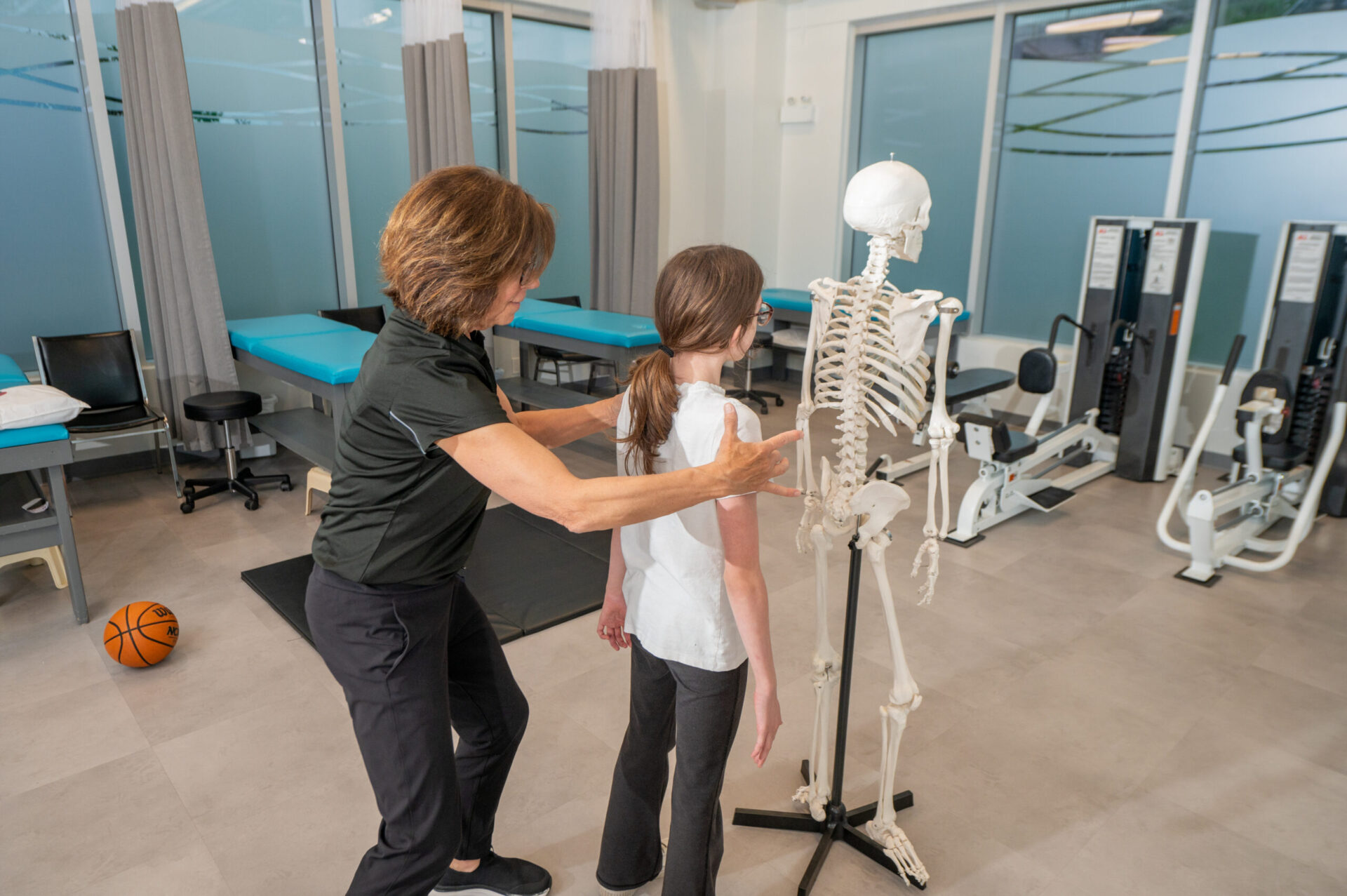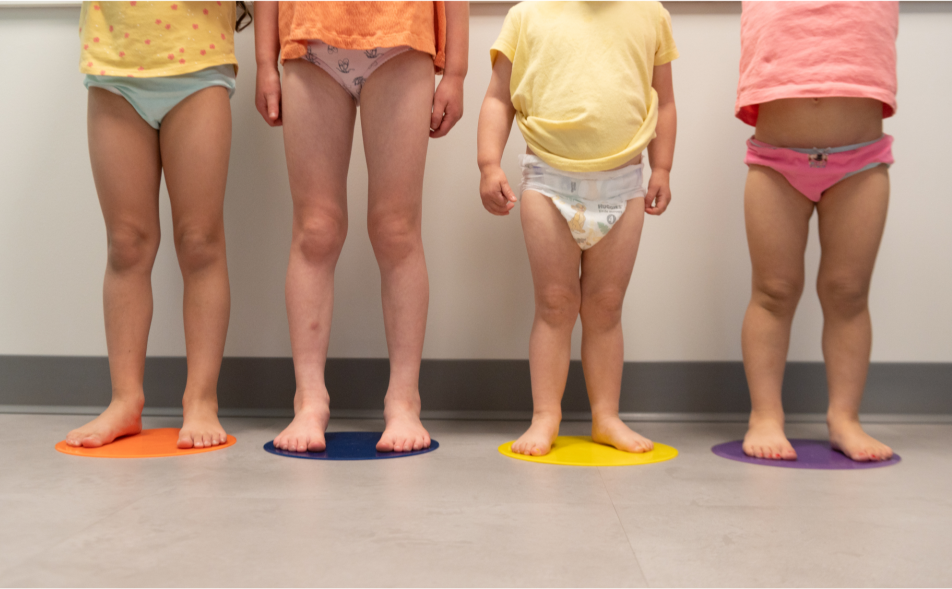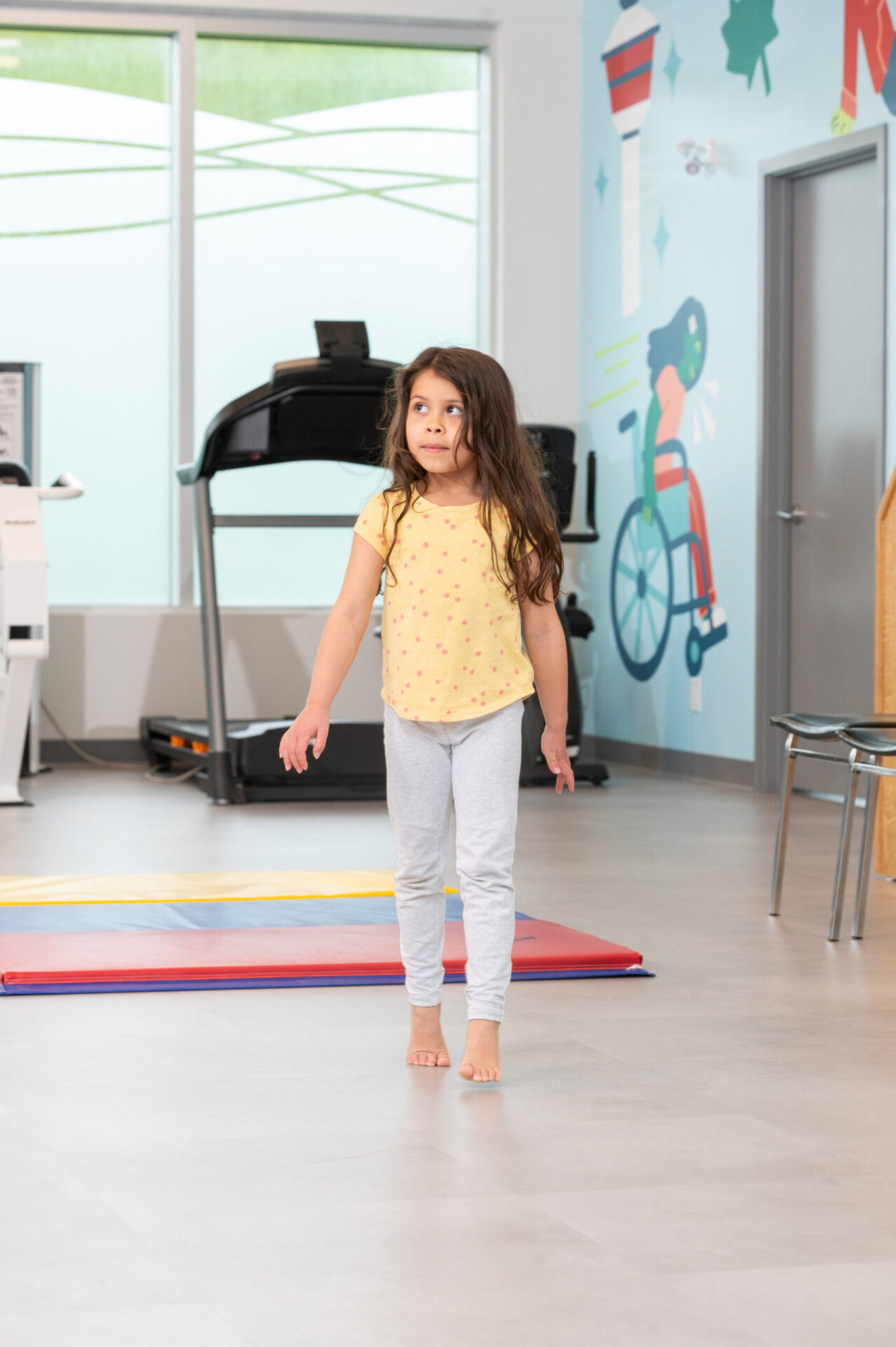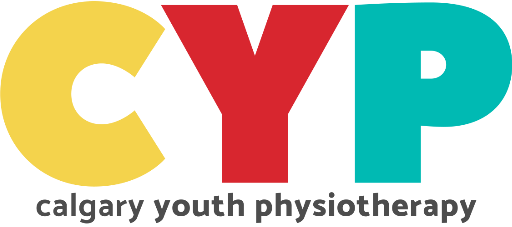As your child grows, you may have concerns regarding their posture and alignment. Or your child may experience episodes of pain. Children are not just mini-adults, and their growth patterns vary. Have our knowledgeable pediatric physical therapists screen your child to ensure proactive care is given when needed.
Child & Teen Concerns
Scoliosis and postural concerns (kyphosis, scheuermann’s disease)
Foot and leg alignment
Gait concerns (limping, in-toeing, out-toeing)
Toe Walking
Hip conditions (Transient synovitis, Legge Perthes, Slipped Capital Femoral Epiphysis)
Growing Pains
Scoliosis and Postural Concerns
Scoliosis is an abnormal curvature of the spine, which may cause the spine to look like it is C- or S-shaped. It can sometimes cause pain, stiffness, and difficulty breathing in children. Signs of scoliosis may include one shoulder blade or hip appearing higher than the other, a prominent ribcage on one side, or the appearance of the child leaning to one side.

List of Treatments
Education on postural habits at school and home.
Core and back strengthening exercises
Stretching exercises for symmetry
Management of symptoms
Manual therapy, soft tissue massage, cupping, dry needling to help with mobility
Collaboration with other health professionals if needed
Post-surgical rehabilitation
Leg Alignment and Gait
The shape of children’s feet and legs changes throughout infancy and childhood. Many variations in shape may cause concern for parents and caregivers, such as Genu Valgum (“Knock Knees”), Genu Varum (“Bow Legs”), In-toeing (“Pigeon toed”), and Out-toeing. Often, these will correct themselves over time. If alignment does not improve, treatment to strengthen the core and surrounding joint musculature might be helpful.
As legs and feet grow and change, so does a child’s gait (how they walk). If there is a problem with leg/foot alignment, it may lead to an abnormal gait. Gait depends on the bone alignment of the legs and lower body, muscle imbalance (strength/weakness), tone, balance issues, pediatric conditions, or pain. Addressing an abnormal gait is essential because it can affect a child’s daily activities.
If your child is delayed in walking, if you notice they trip a lot, or if they show functional difficulties when walking or running, a physio visit might be in order.

List of Treatments
Gait assessment
Education on shoe wear and orthotics
Strategies to improve balance
Strategies to improve foot, hip and core strength
Advice on activities for play that improve range of motion, balance and endurance
Toe Walking
Toe walking is a gait pattern where a child walks on the balls of their feet, and their heels do not consistently touch the ground. It can be common to see this in toddlers, but most kids grow out of it, and it can be hard to predict who will and who won’t. Possible causes of toe walking may include musculoskeletal issues (muscle shortening), neurological conditions (cerebral palsy), developmental disorders (autism spectrum disorder) or sensory factors. An assessment is essential to determine if your child’s toe walking is of concern or caused by another condition.

List of Treatments
Detailed assessment to identify contributing causes to toe walking
Consultation with an occupational therapist for sensory regulation
Education of shoe wear, orthotics or special shoe insets
Strengthening and stretching of foot, leg and core
Gait re-education

Questions about our clinic?
We have the answers.
Don’t have time to call right now? No worries. Email us. Let’s set up a convenient time for a complimentary 15-minute consultation. Or the answer you’re looking for might be on our Frequently Asked Questions page.

